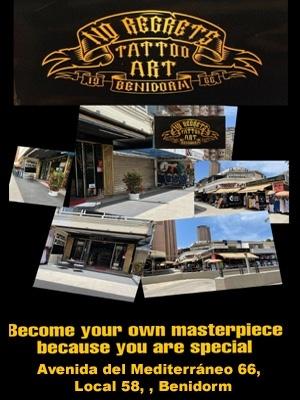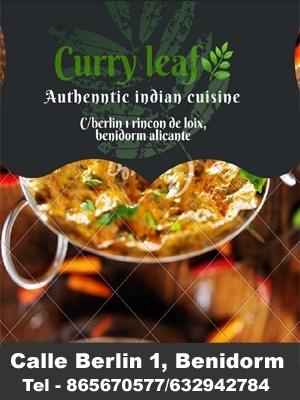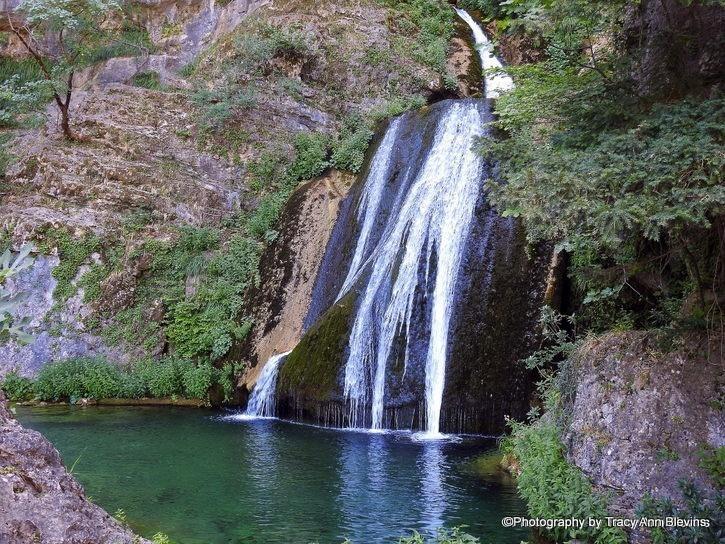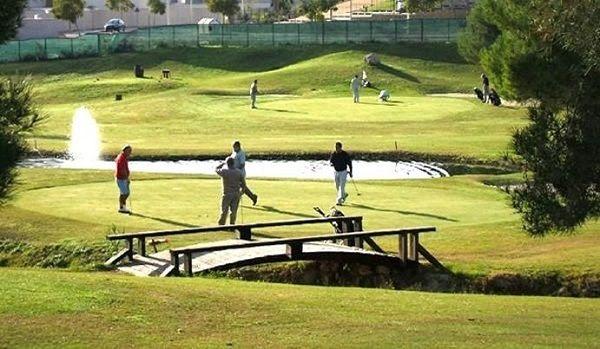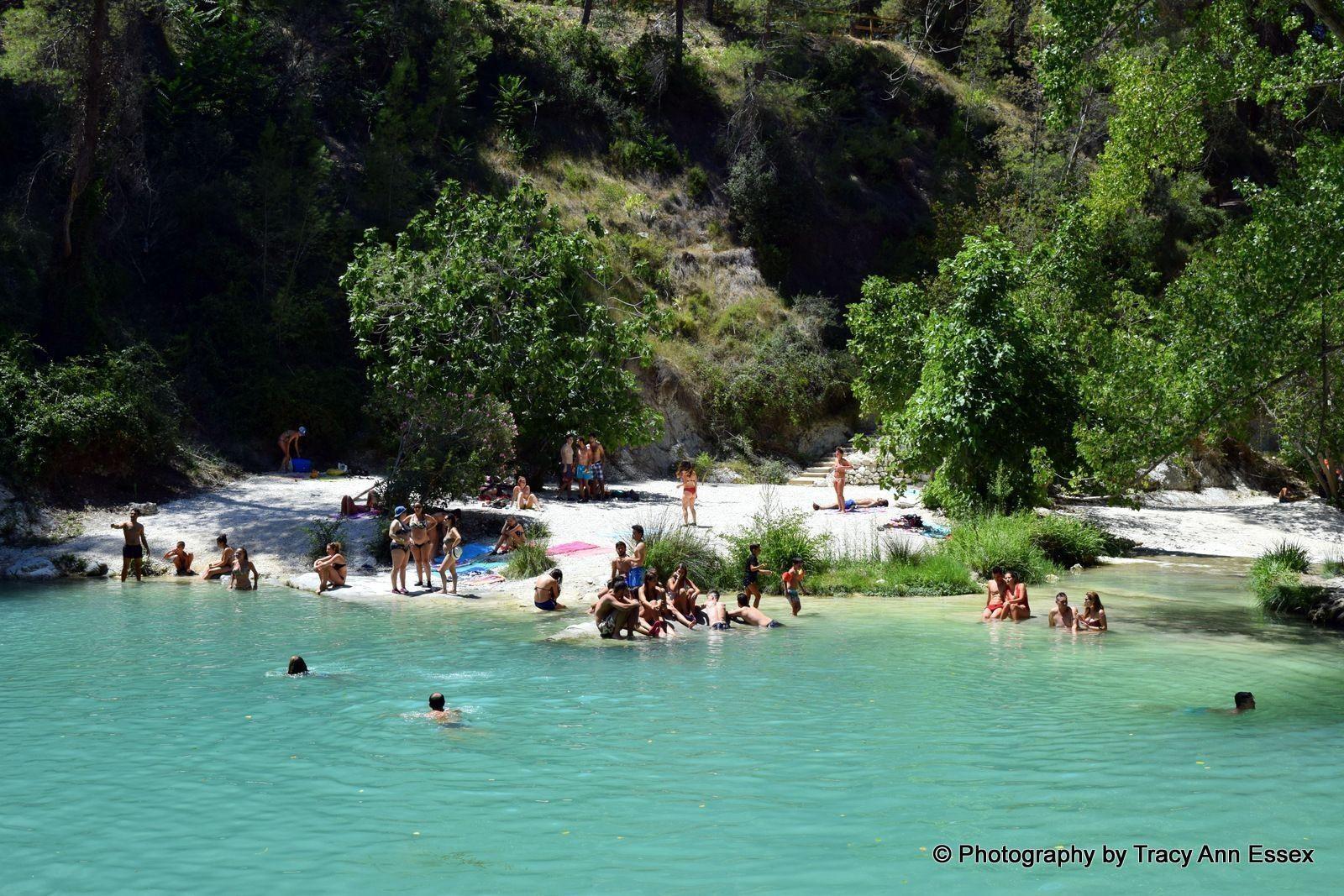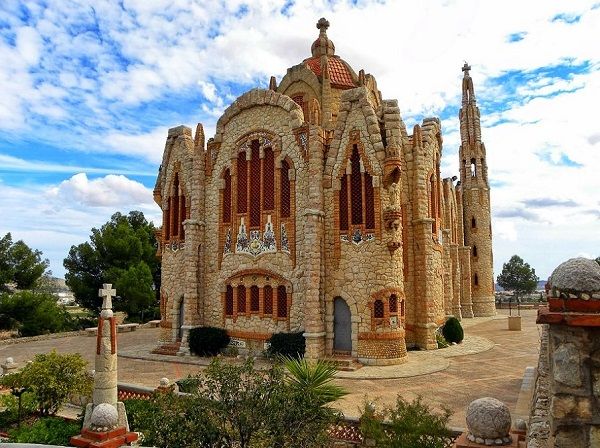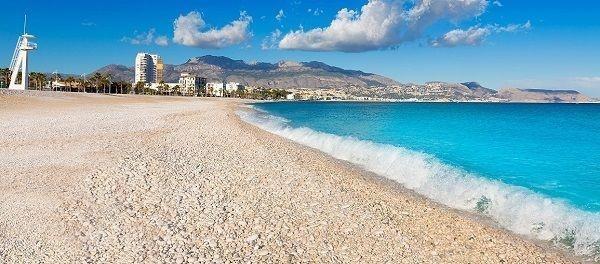
ALL ABOUT ALBIR
Albir - The Little Gem of the Costa Blanca - Albir is part of the Alfaz del Pi Municipality and is the coastal area.
Unlike many other Costa Blanca towns Albir has been carefully planned virtually from scratch. Only one or two of the buildings are over five storeys high, its avenues are broad, and tree lined, there is a sense of space and an unhurried atmosphere making a visit to Albir a real pleasure.
The Beach - With almost 600 metres of clean safe beach, there’s always plenty of room to stretch out.
Albir’s Raco beach is a NO SMOKING zone

The beach is comprised of very fine smooth pebbles and bathers can take in the views of the Sierra Helada nature reserve to one side, and to the other, the famous Peñon de Ifach, the massive outcrop of rock at Calpe
Beach facilities are excellent, in summer there are three lifeguards on duty, a first aid post and an ambulance on standby for minor injuries.
There are public toilets in the centre of the promenade and even freshwater foot showers.
During the high summer months Albir beach has amazing access facilities for people with reduced mobility, with reserved parking, ramps and special walkways for wheelchairs, amphibious crutches and special chairs which allows people to enter the water assisted by specialized personnel, allowing people to enjoy the sea in a safe setting, there are also places with shade in the area which was formerly the biblioplaya.
The beach side promenade, the Paseo de Las Estrellas - with Hollywood style plaques honouring the stars who have won awards at Albir's film festival.
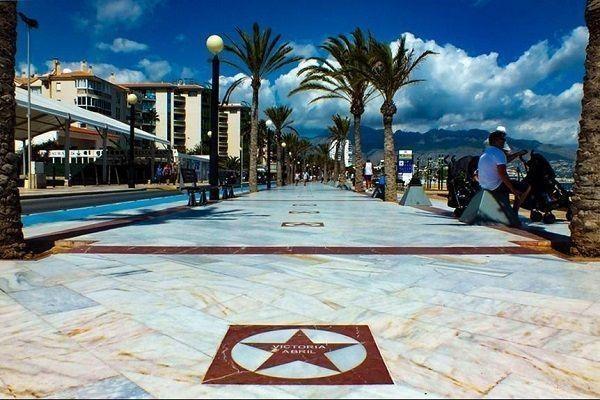
Eating Out and Shopping
Albir is blessed with plenty of all types of restaurants; with cuisine from all over Europe and further afield to choose from you will find it easy to find the food for the mood. Also, there are lots of nice little shops which make a pleasure to buy your souvenirs.
It is also the home of The Church and Brew Rock (just on the Altea border) both great bars for food and entertainment.
Market days
A large market is held every SUNDAY in the car park on the high street.
28th June - Albir Artisan market", in the Raco area of the main beach (By the anchor) 15 stalls can be found here the market, open from 18.00 until 24.00, selling all types of interesting goodies. Open nightly until 5th September.
Leisure & Culture
As well as the summer fun Albir/Alfaz del Pi also has a host of activities in the cooler season. TheCasa de Cultura cultural centre is busy all year round and has a concert hall, TV studios and exhibition space. It hosts the Film Festival, a Jazz Festival in October and has concerts by international dance companies and orchestras throughout the year.
Visit the ruins of a roman family
These open-air Roman ruins museum, contains the ruins of a villa from the Roman times, believed to have been occupied between the 4th and 6th Century A.D.
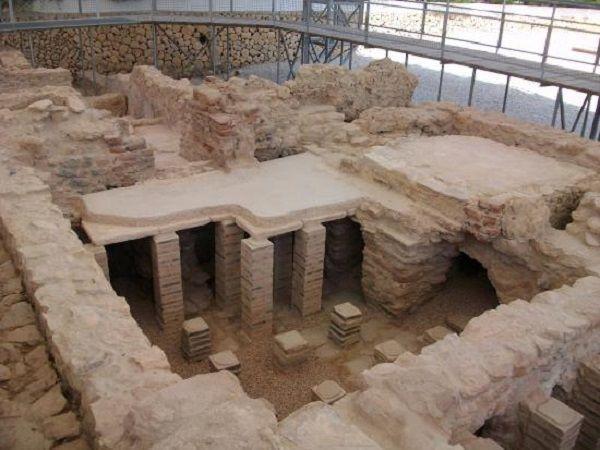
The museum was inaugurated in 2011.One of the best-preserved examples of a traditional roman baths in the Valencian community, the system of hot water heating can still be seen, as well as a Mausoleum where the family were buried.
From the 26th of September 2022, there will be the free use of "virtual reality headsets", which will enable visitors to see what life would really be like in the villa in Roman times. Great place to take youngsters too.
Opening hours in the winter are Tuesday to Friday from 10.00 to 13.00, and Saturdays, Sundays and fiesta days from 10.00 until 14.00. Commentaries are available in English if required.
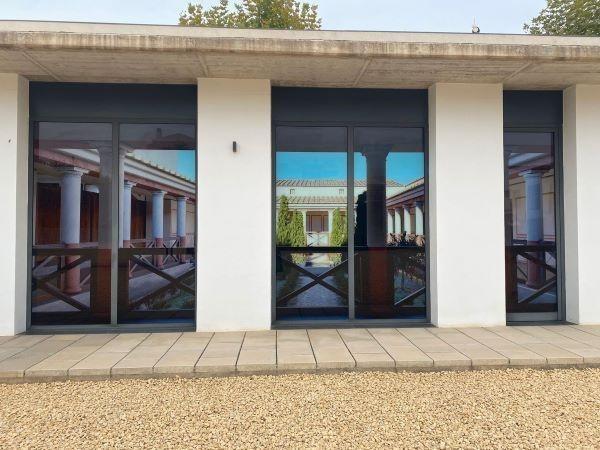
The museum is close to the beach in the centre of Albir. Look for the dry riverbed which runs from Albir Playa Hotel down to the beach
WALK TO ALBIR LIGHTHOUSE
The walk follows the coastline with splendid views of Calpe rock and the bay of Albir and Altea. It is a very easy walk with very little gradient and is 5.4 kilometres.
To start the walk drive through Altea towards Benidorm on the N332 and turn left at the signpost to Albir. Follow the signs to El Tiburon restaurant and continue until the Sierra Helada begins and you will arrive at a car park (free parking) on the right-hand side.
Follow the lane which will lead you to the lighthouse.
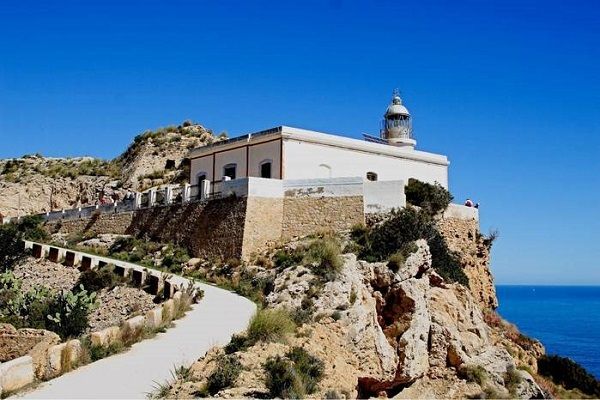
There are plenty of wildflowers and herbs along the way with the most stunning views. All along the way are various notices giving details of plants and flowers. About halfway, on the left-hand side you will see the remains of the old ochre mines. These were worked through Roman times into the Middle Ages and up to the beginning of the 20th century. There is a footpath leading down to the remains. Some of the mine entrances are open and you can explore them. Inside are the red and orange veins of the ochre.
A little further along on the right-hand side there is a very large cave entrance. It is called “La Boca de la Ballena” which means the whale´s mouth and is, in fact, a shelter.
A little further there is a footpath on the right-hand side which takes you to a viewing point. It is worth taking this short diversion as at the top is a plaque giving details of the conservation scheme, saving various micro reserve fossil dunes, prickly juniper, crowberry broom, thyme, and various other plants.
You will arrive at a pair of large iron gates which are locked. If you wish to continue to the lighthouse there is a path to the left of the gates which will take you to the other side and from there the lighthouse is only about 200 metres.
Bus and Taxi Information
The number 10 bus leaves Albir for Benidorm every 15 minutes from 10.00 to 21.00 and takes about 20 minutes. Bus stops in Albir are no more than 10 minutes' walk apart and are denoted by the letter 'P'
A taxi will cost around 12€ - 15€ - The taxis of l'Alfàs and l'Albir have changed their phones, and to request their services you will have to dial 96 585 61 01. From now on each municipality of the Marina Baixa has its own taxi headquarters.
OFFICIAL FIESTA DATES IN ALBIR/ALFAZ DEL PI - some dates may change but most are static
January
Three Kings, January 5th Place: Carpa Municipal
March
March 1st, Carnival, Calle Federico Garcia Lorca.
San José, 18th and 19th, Location: Plaza Mayor
May
Celebrations of the Creueta, 2nd, 3rd and 4th May, Place: Plaza de la Creueta
June
San Juan, June 23rd, Location: Playa del Albir
August - Festes de Albir - around 19th
September
Copletes, Sept. 12th, Location: Plaza Mayor
October
Valencia Day, October 9th
November
Fiestas patronales of the Holy Christ of the Good Success. Place: L'Alfás Del Pí. Days: 06,07,08,09 and 10 November.
December
Celebrations of the Immaculate Conception, 6. 7 and 8 December.
FIND OTHER PLACES TO VISIT ON THE COSTA BLANCA NORTH HERE
Albir in 1988
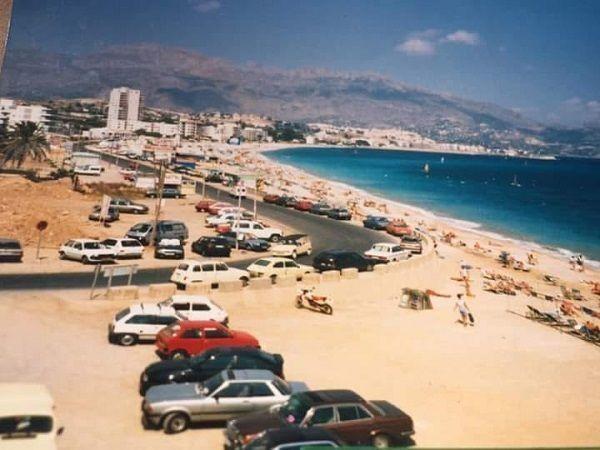
Beautiful photos of Albir 2021 taken by Benidorm Seriously Member Sharon Nolan Gordon

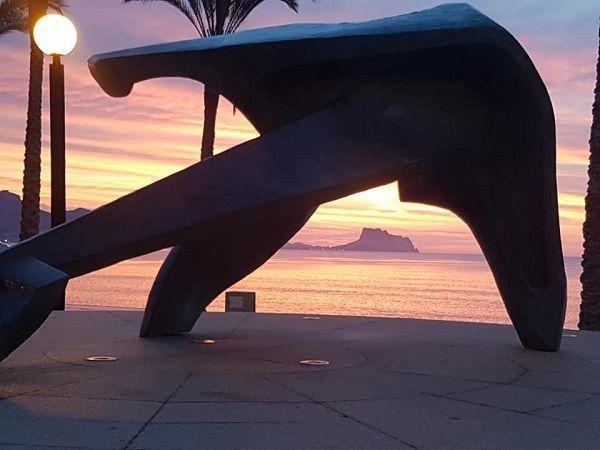
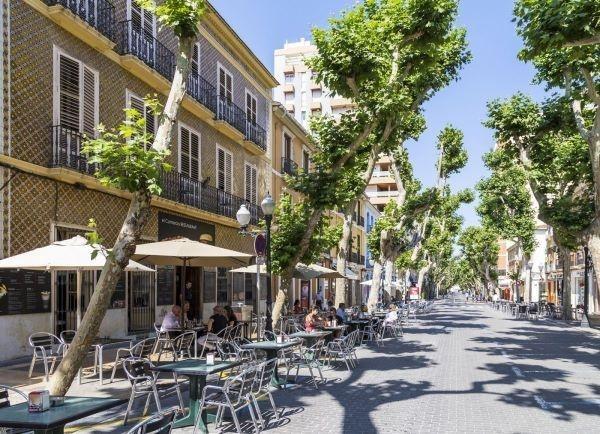
All About - Denia
Denia is situated 51km North of Benidorm, about a 45-minute drive it is set on the northern edge of the Alicante region and backed by the impressive mountains of the Montgo Natural Park.
Denia is known for many things, one of them being that part of the town sits on the Greenwich meridian line, (The same one that passes through London UK)
The Iberians, Romans, Muslims and Christians have all left their mark on the seaside resort of Denia
A lovely place to visit when in Benidorm! There is the ruined castle which guards the town and has stunning views overlooking the marina, the natural park of Montgo and the Torre del Gerro (see below). The marina with its beautiful, elevated promenade. There is also 20 kilometres of coastline which include both rocky and sandy beaches, the fish market, the old town and the impressive tree lined main shopping street as well as the museums.
The main shopping street is, Calle Marques de Campo, this is a pretty tree-lined street and has a good range of shops, restaurants and bars.
Denia main street
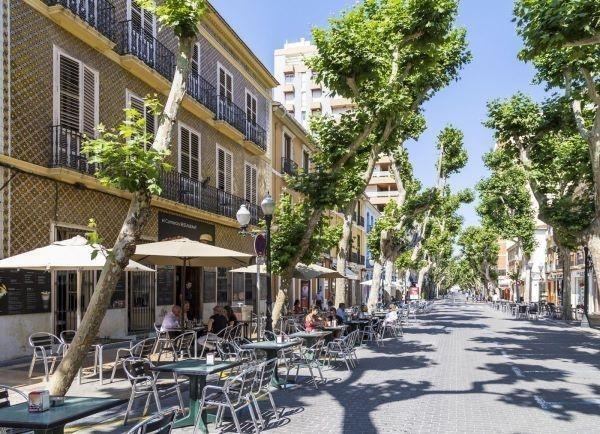
You can see the monuments throughout the centuries as you wander through the town centre, and fishermen’s quarters, (Baix La Mar). These streets in the fishermen’s quarter have charming brightly coloured houses with vivid flowers overflowing from the wrought-iron balconies.
Turn a corner and you will find typical squares such as Plaza de Sant Antoni or Plaza de la Creu with noisy Spanish bars offering traditional food.
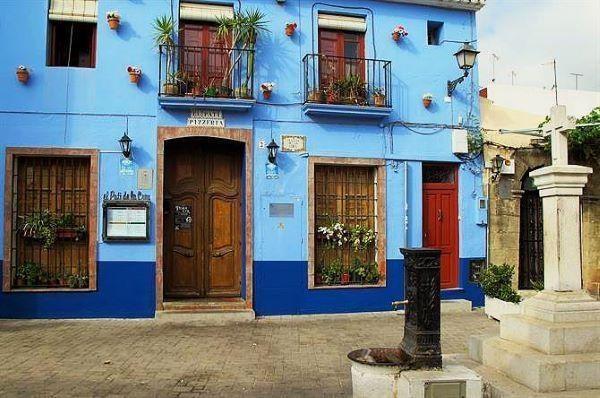
Beaches
Over 20km of beaches - to the north of the town, there are beaches of fine sand and shallow waters, such as Les Marines, LAlmadrava, Les Deveses, Les Bovetes and els Palmars and to the south are smaller coves along the rocky coast, known as Les Rotes, which is popular with fishermen and divers.
Denia is also a great place to go dolphin and whale spotting and is the coastal town in the Valencia region with the highest number of sightings. The best place to look for these beautiful marine creatures is by the Cabo de San Antonio Marine Reserve
Denia Castle and Archaeological Museum
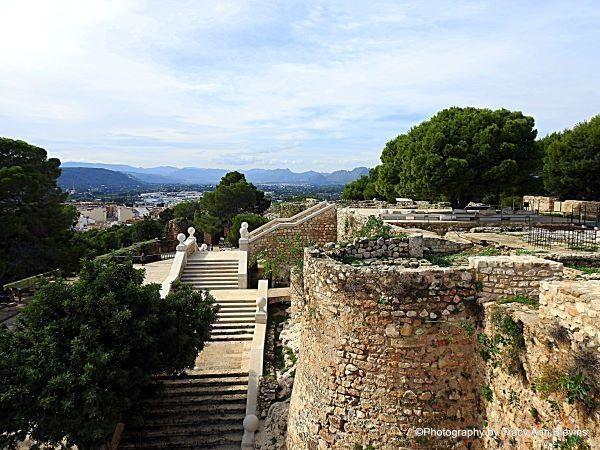
“Portal de la vila” (City Entrance Arch), the castle’s main entrance.
The Castle is located on a gentle hill beside the sea and in the historical city centre.
PEDESTRIAN ACCESS - Next to the Town Hall of Dénia, you will find stairways on Calle Hospital, walk up here. After this 1st steps, you will find another stairway section to the left on the street called “Cuesta Madre Amparo” which takes you directly to Calle San Francisco accessing the castle.
Opening hours of the castle
Every day: Nov/ March: 10:00 to 18:00. April-May: 10:00 to 19:00 June: 10:00 to 21:00. From July to 15th September: 10:00. to 20:30. (Night opening hours: until 00.30 h. Except for “Music at the castle” concert days. From 16th to 30th September: 10:00 to 20:00. October: From 10:00. to 18:30.
Price - Adults: 3 € Children (8-14 years olds): 1 € Pensioners: 2 € Students: 2 € Groups (minimum 10 people): 2 €
Please note that according to our members only Credit cards payments are accepted.
Denia Museo Etnologico
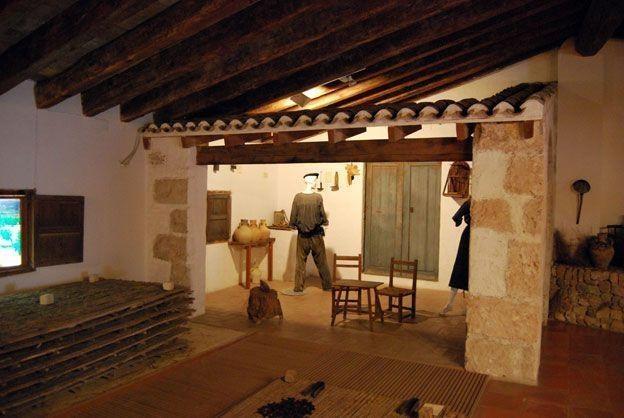
To find out more about Denia’s rich and varied history, in Calle Cavallers in the historic heart of the town, just off the Plaza del Constitucion.
The museum is in a typical bourgeois house from the 19th century with exhibitions showing the important of the raisin trade in Denia and its subsequent demise.
In the main rooms on the first floor is beautifully crafted furniture from the reign of Isabel II in the 19th century along with luxurious clothes and jewellery.
The museum is open from 10.30am to 1pm and 4pm to 7pm. It is closed on Sunday afternoons and Monday. Entry is free.
Toy Museum
On Calle Calderon, with interesting wooden and tin toys including dolls houses, trains and cars made in Denia in the first half of the 20th century.
The museum is on the first floor of the old train station in Calle Calderon, Denia. Open 10am to 1pm and 4pm to 8pm. Entry is free.
Markets
Every Monday from 8 am to 1.30 pm, located in Torrecremada Esplanade.
Antiquities flea Market
Every Friday morning, from 8 am to 1.30 pm, at the La Vía street. Products: sale of antiquities and second-hand objects.
Spring and summer open air market
Situated along the Maritim esplanade in front of the local port, from 6 pm to midnight (until 1 am in summer and festivities's eves). Sale stalls with a bohemian and handicraft atmosphere where you can find a great variety of products: imitation jewellery, leather goods, paintings, etc. Spring (Mid-March to 1st week in June): Weekends and festivities. Summer (Mid-June to Mid-September): every day.
Market at Jesus Pobre riurau: Food and crafts. Timetable: Sep-Jun 9 to 2pm. Jun-Sep 6 to 11pm.
Market in La Xara: at Cinema Sq. Local products and crafts. Every second and fourth Sunday of the month, from 9.30 to 2.30pm
Denia Ferry Port
Denia ferry port serves as the main hub for connections to the islands of Ibiza, Formentera and Palma de Mallorca.
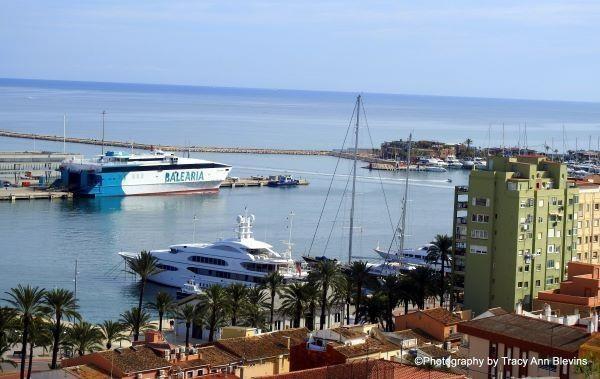
Balearia makes the ferry crossing from Denia to Ibiza in just two or three and a half hours, depending on the type of ferry you book, the modern Super-Fast Ferry or the ferries where you can take your own car, Ibiza is 124,1 Km from Denia. READ MORE HERE
Denia Port and Fish Market
Located at the port where you can watch how the ships arrive from 3.30 p.m. to 6 p.m
Photo by David Elsworth, Benidorm Seriously Member
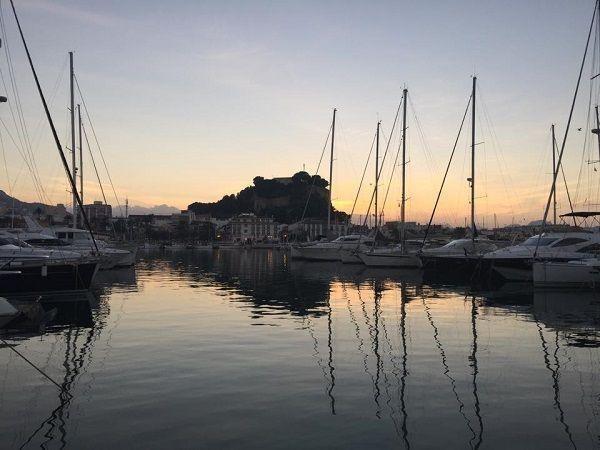
Fish sale. From Monday to Friday, from 5.30 p.m., all year round.
You will find a great variety of sea products: Dénia red prawn, lobsters, sea urchins and different fresh seafood; octopus, anchovy, calamari and much more depending upon the days catch.
Fish auctioning. From Monday to Friday, from 5.p.m; (all year round, except during the month of biological halt.
Golf
Denia has its own 18-hole golf club, situated quite close to the town, the Club La Sella was designed by José Maria Olazabal.
Gerro Tower
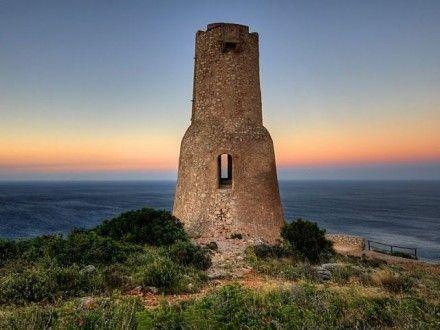
This is a Renaissance watchtower, which was part of the coastal defensive system developed during the 16th and 17th centuries to defend the coast from the attacks of Barbaresque pirates.
Although there are documents proving the existence of three towers in the natural park’s limits, the Gerro tower, a Renaissance fort (16th c.) is the only still remaining. It is one of the coast’s most outstanding towers. It has a circular shape, shaped like a truncated cone divided in 2 parts featuring a King Charles V coat-of-arms, supported by three cantilevers.
The tower owes its name to its strange shape as a “pitcher or gerro” (a valencian language word for jar or pitcher).
How to get there: from the last regular bus tine in les Rotes Road (next to Restaurant Mena) follow the road towards the east for 50 metres up to Via Làctia Street. Going up this street there is a fence that forbids vehicles from passing to the access way to the path leading to the Tower.
Mount Montgó Natural Park
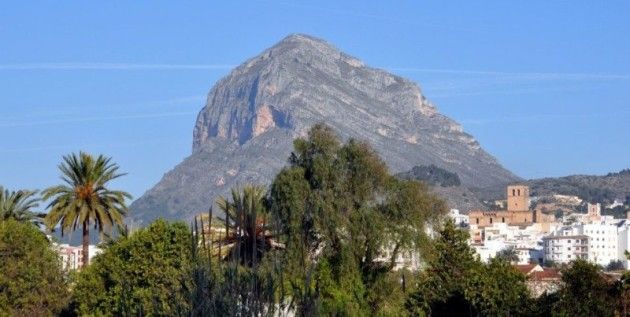
The Natural Park rises 753 metres above sea level and shelters over 650 vegetable species.Amongst these we must point out the kermes oak, the red lavender, maritime fennel, rockrose species, the Valencia rock violet, the rock scabious, the black sabine or the palmetto.
Also, a great place for bird watching where you will see birds such as the yellow legged seagull or the Audouin seagull, several crows, ravens and birds of prey (the partridge eagle, a couple of royal owls, common kestrel ad the pilgrim falcon), reptiles, amphibians and mammals such as the fox, rabbit, badger, genet, etc.
The Montgó Nature Reserve has its own Interpretation Centre that provides detailed information on this privileged setting and organizes guided excursions year-round. The centre houses a wheelchair-accessible exhibition on the ecosystems of the Montgó and the Nature Reserve of the San Antonio Cape Sea Floor, main routes, traditional uses and diverse activities for visitors to the Nature Park. The exhibition is equipped with audio guides in 5 languages to guide visitors of different nationalities.
ADDRESS
Camí de Sant Joan, s/n. Finca del Bosc de Diana. 03700 Dénia. Tel. 96 646 71 55 / 679196461.
Getting to Denia from Benidorm
The best way is by TRAM
By Bus, Alsa bus from around 9€
or by car either via the N332 (58.4km) or the AP7 toll road (51.3km)
Whilst in Denia another fantastic place to visit are the amazing Gardens of Jardín de l'Albarda
The Garden of l'Albarda, located in the town of Pedreguer, are one of the best kept secrets in the Marina Alta.
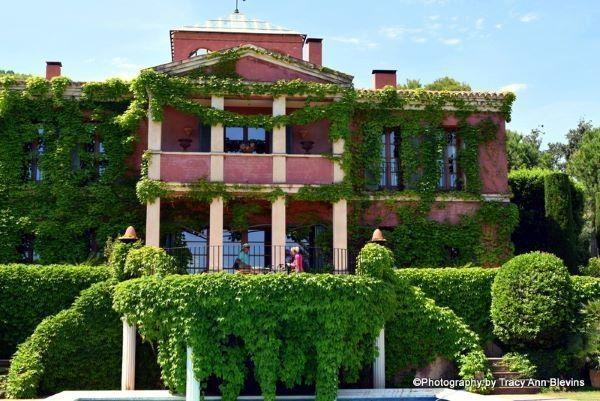
Photos by David Elsworth, Benidorm Seriously Member
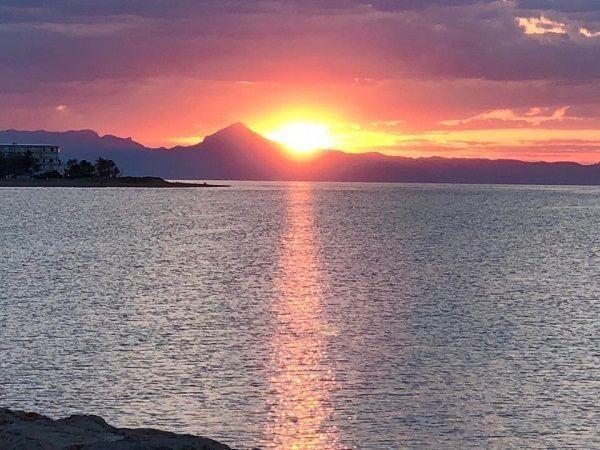
Calle Loreto, Tapas Alley "Day time view, very busy in the evening. Prices are very reasonable due to the competition."
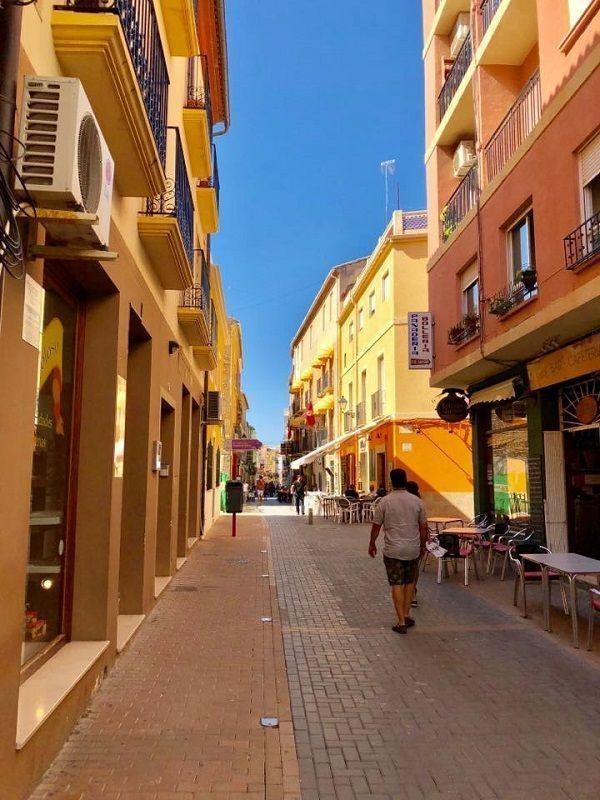

ALL ABOUT CALPE
Calpe is a twenty-five-minute drive north from Benidorm on the N-332. Calpe, also spelt without the 'e' as Calp is instantly recognised by the mighty Penon de Ifach, the huge rock which rises 335 meters out of the Mediterranean Sea. This has stood guard over the town and witnessed its transformation from sleepy little fishing village into tourist magnet
Calpe has a wonderful mixture of old Valencian culture and modern tourist facilities. It is a great base from which to explore the local area or enjoy the many local beaches. Calpe alone has three of the most beautiful sandy beaches on the coast.
The town of Calpe was originally a fishing village. Although it has embraced tourism and a large influx of European residents, it still retains its identity through the local fish market held at the port each afternoon and the Saturday market that simply buzzes with activity.
Calpe Old Town
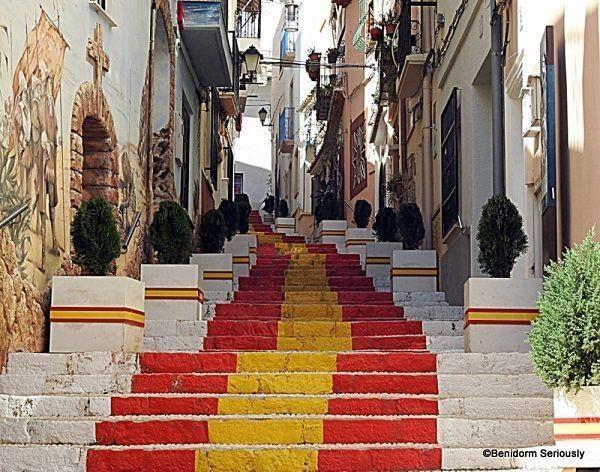
Head uphill on the Avenida Gabriel Miro from the seafront and you will come to an archway with brightly coloured steps leading to Calpe Old Town. This area has a completely different feel to it with the cobbled streets and wonderful Spanish architecture. Follow the signs for the Tourist route from the Placa dels Marines and you will come across some amazing sights.
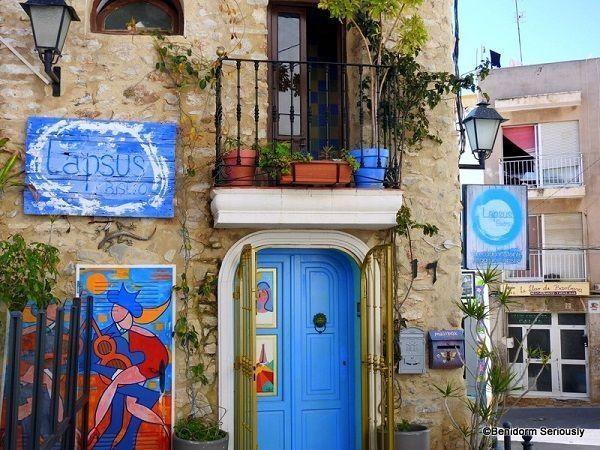
The ancient walls of the town surround an area full of excellent restaurants and bars, as well as the beautiful 15th century church.
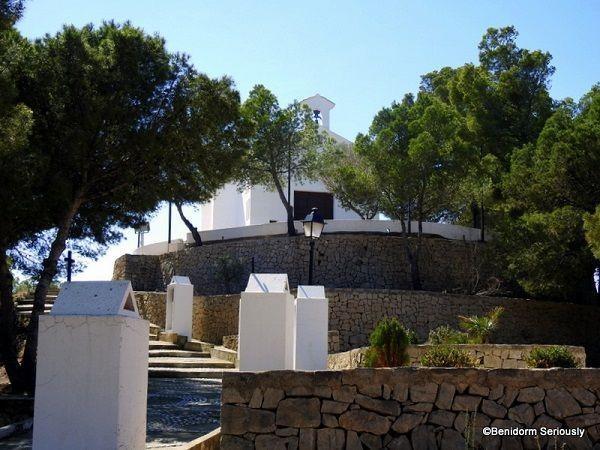
Visit the Museo de Historia y Arqueología de Calpe which is located on Calle Santísimo Cristo and the Torreó de la Peça which can be found in the Plaza de la Vila, which was part of the double defensive wall which was used to defend the city in the 15th century and currently houses the Museo del Coleccionismo.
Enjoy a stroll in the plaza mayor, there is a handy 24-hour car park here which is perfectly situated to enjoy all that the old town offers.
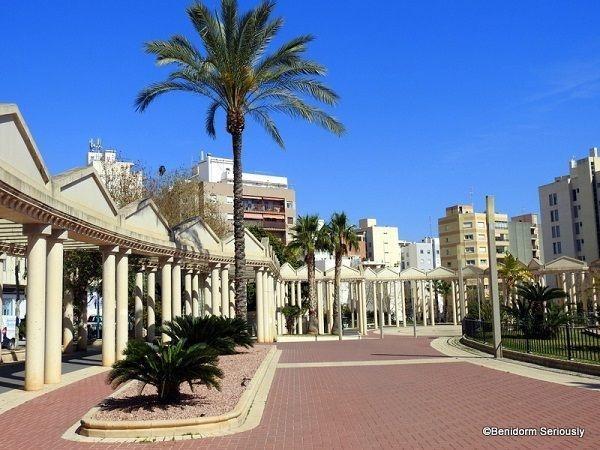
Penon de Ifach
This volcanic boulder, known as Penon de Ifach (rock of Ifach) towers to over 335meters, 50,000 m2. It resembles the rock of Gibraltar, situated further south, so much that the Phoenicians gave it the name of the Northern Rock in order to differentiate it. The Rock of Ifach was declared a Nature Reserve in 1987 due to its rare plants and the colonies of sea birds that reside there.
The summit of the rock is reached after a tough climb up a footpath, by means of a short tunnel through the upper part of the rock. Be warned the path above the tunnel has almost no safety features and is not recommended for anybody with a fear of heights, the very young, or the remotely unfit.
It is a genuinely tough and dangerous climb but from the top, magnificent panoramic views can be had and on a clear day, the island of Ibiza is visible. If you suffer from vertigo or just can't find the energy, then explore the rock from the comfort of the little ferryboat that sails around it. You can catch it from the marina.
March 1st, 2021 - A booking system is to be introduced, to limit numbers to a maximum of 300 people a day, who can access the route to the top, more info to follow.
If you are not up for the tough climb to the top, there is an easy 10-minute stroll around the base of the rock, from where you can enjoy some amazing views.
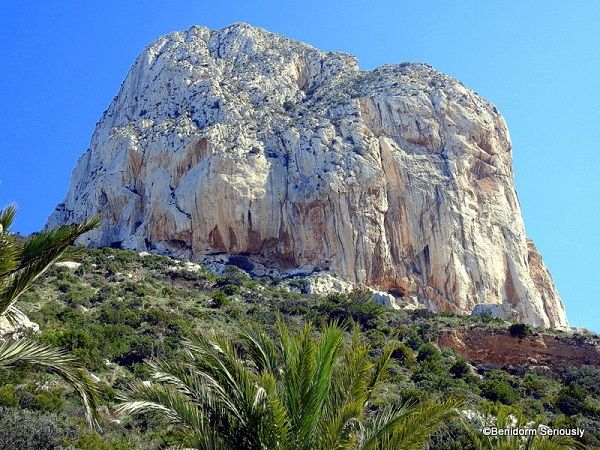
Calpe Port
The "Royal Calpe Yacht Club" is the town's most important harbour, with extensive, first-rate facilities, and also a lively atmosphere The Port is sort of divided into two, the fishing area and the yacht club area, enjoy a meal at one of the many fish restaurants that can be found here.
Visit the famous Bofill Buildings - Partida la Manzanera 2, 03710, Calpe
La Muralla Roja, Spanish for 'The Red Wall,' is a housing project located within the La Manzanera development in Calpe. Formed like a fortress, the project appears as if it is emerging from the rocky cliffs it sits on and offers fantastic views over Calpe.
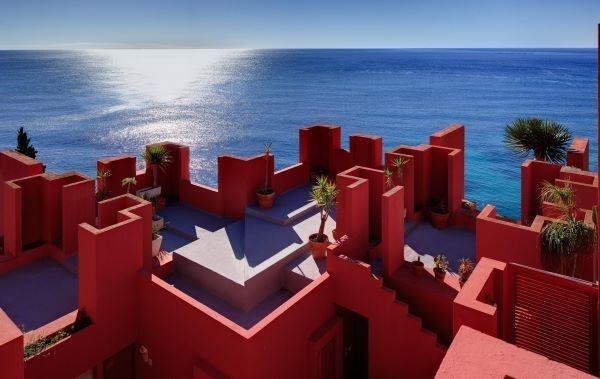
The architect Ricardo Bofill left his mark of identity in the town of Calpe, with three incredible structures sitting on the edge of the Mediterranean: La Muralla Roja, Plexus and Xanadú. The avant-garde work of the Catalan architect was built in 1972.
Beaches
The three golden beaches sweep around the coast ending at the rock. The modern promenade lined with café bars and restaurants allows you to wander along the length of the seafront taking in the large marina and the old fishing port.
The two main beaches are Playa Levante (La Fossa), and Playa Del Arenal (Bol)
La Fossa beach
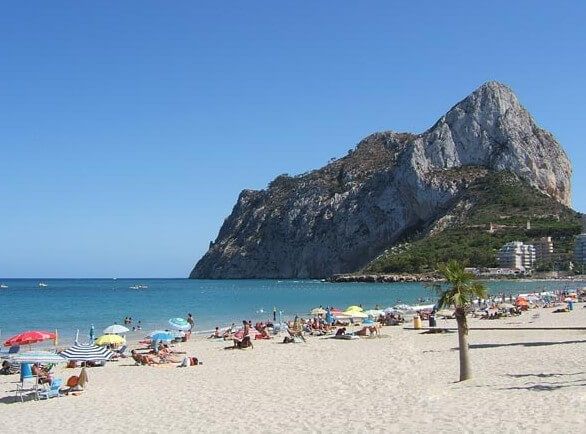
History
Calpe is a town rich in history and culture and its strategic position on the coast has attracted many settlers throughout history. Remains of Iberian tribes have been found around the town. Later, the Romans founded Calpe as a prosperous colony, whose main activity was drying and salting fish.
Christians and Moors lived peacefully for a time but were subjected to attacks by pirates during the 14th-17th centuries.
The peace of the 18th century enabled Calpe to regenerate and form the current tourist location.
Sightseeing & Culture
When it comes to sightseeing, the ancient town centre, next to the Moorish quarter is a good place to start. The old town walls and the church known as Iglesia Vieja are well worth visiting. This church is the only remaining example of Mudejar-Gothic architecture within Valencia.
Alongside the modern Paseo Maritimo are the recently discovered remains of a Roman villa, once forming part of the Roman fish factory, known as the Banys de la Reina (Queens Bath).
Overlooking the Mascarat ravine are the ruins of the Moorish Castle of Calpe and all over the local countryside are the typical rui-rau country houses, with arched porticos for raisin drying.
The town centre is also home to the Museum of archaeology and the Fiestas Museum.
Calpe Salt Flats - Las Salinas
The salt flats are located in a marshland close to the centre of town, near the base of the Peñón de Ifach. These were formally a working salt mine, but have not been active since 1988, but for centuries the salt mines were the livelihood for many local families.
During the Roman Empire, the salt mines were already fully operational, and produced large quantities of salt to flavour and preserve their food such as fish and meat
1n 1993 this area was declared a maritime zone and a protected natural area which is a rich but fragile ecosystem and is a place for hundreds of species of natural flora and fauna and attract more than 160 species of migratory birds, the most famous being a large population of pink flamingos and storks.
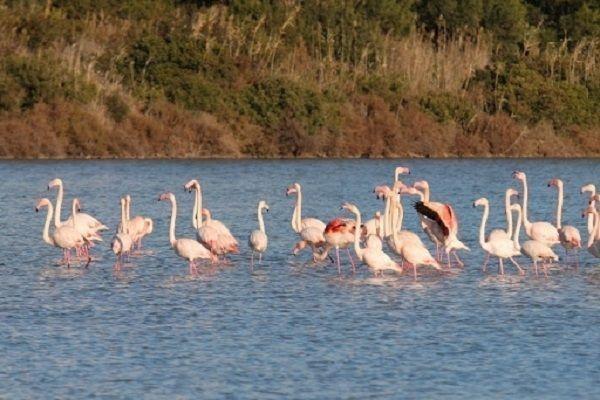
There is a rough cycle track round the lake and also a walking route which start on Avenida de Ejércitos Españoles and then Avenida Juan Carlos I.
Cuisine
Cuisine from the Costa Blanca combines delicacies from both land and the Mediterranean Sea. Many civilizations have lived in this area (Celts, Iberians, Greeks, Romans, Muslims), all of which have all left their mark on the gastronomy.
The diet is a typically, healthy Mediterranean one; the Costa Blanca is rich in fish, vegetables, olive-oil, rice and fruit and the ingredients which are all used to prepare delicious, healthy dishes, such as Paella Valenciana, Arroz Negro (black rice), Arroz al horno (Oven baked rice), Arroz a banda (fish and rice stew), Arroz del Señoret (Prince's rice).
If you have a sweet tooth, then you will enjoy the local homemade pastries and deserts that the area is famous for. Or Jijona ice-cream (Nougat), which is made with the almonds of the region.
While on the Costa Blanca you can delight the palate with the wonderful regional wine selection. It’s worth giving a special mention to the local wine ‘Jalon’, due to its quality and bouquet.
There are many international restaurants close by offering a wide choice of different cuisines from around the world.
Leisure & recreation
The port has a nautical club and facilities for yachting, windsurfing and water skiing. If its dry-land sports, you want then the rock of Ifach offers climbing facilities.
Golf
The Ifach golf course is situated in Moraira (Benissa) on a country estate. The challenging course offers magnificent views of the sea and mountains. It’s a nine holes course and although the holes are quite short, the terrain and the narrow fairways make them tricky and entertaining.
Within one hour’s drive there are a good selection of golf courses to keep the fans of this Scottish game thoroughly entertained.
For the Family
If you are looking for things to do with the family in Calpe, take a visit to FAMILY PARK. Open every day, (opening hours vary during the year) FAMILY PARK is an amusement park offering fairground rides for all the family. Find the park at Av de los Ejércitos Españoles (next to the Salinas).
Climate
Calpe enjoys a typical Mediterranean climate, with cool sea breezes in summer and protection by surrounding mountains against the cold North winds in winter. The area averages nearly 3,000 hours of sunshine each year and the average temperature easily exceeds 20 degrees.
In 1986 the World Health Organisation recommended the climate of the area as one of the most equitable in the world - neither too hot in the summer nor too cold in the winter. On average it can boast 325 sunny days each year making it an ideal all year-round destination.
GETTING TO CALPE FROM BENIDORM
By Boat
Calpe Mini Cruse from Benidorm, experience some of the most beautiful views of the coastline. The trip lasts only one hour, but it is well worth it.
*Please note boats from Benidorm to Calpe DO NOT run all year round.
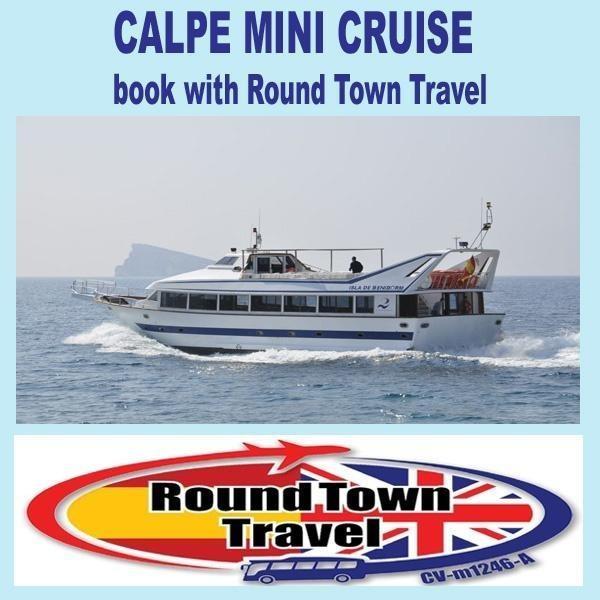
Drive - 23.7 km roughly 25mins, via the AP7 and the N332 or 37 minutes via the scenic N332, 21.3km
A taxi from Benidorm to Calpe will be approximately 35€ - 40€
ALSA Bus Service
Details of the bus service can be found HERE. To use the website, click on the English flag, then select Departure Point as “Benidorm” and Destination as “Calpe”. You will then see the full range of times available.
Train/Tram Service
Details of the Train service are on this page:
Calpe Local Bus Service
Once in Calpe, you will need to use the local bus service to get to the fish market. Autobuses Ifach S.L. runs the local bus service in Calpe.
There are 2 main services, one around the resort from the Train Station to La Vallesa, and the other from Calpe to Moraira and Teulada.
FIND MORE PLACES TO VISIT ON THE COSTA BLANCA NORTH
Calpe in the 1960s
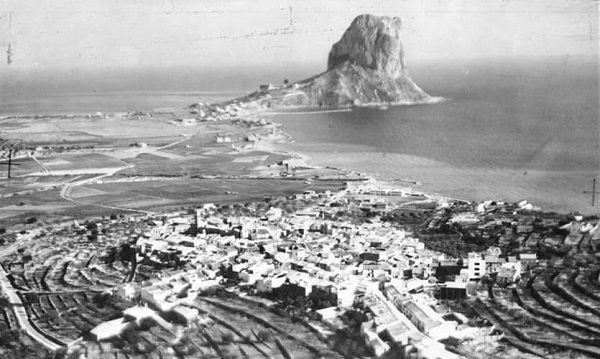
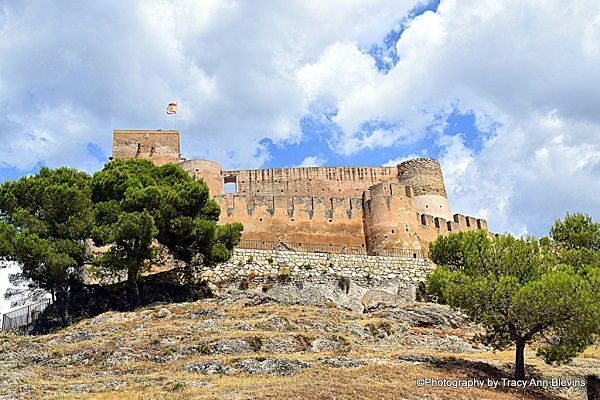
Costa Blanca Castles - The Vinalopo Castle Route
Costa Blanca Castles to Visit - The Vinalopo Castle Route. Castles hold a great fascination for many of us it may well be an interest in history, architecture, the fantastic views or just the romance of battles fought, won and lost. Whatever your interest the Vinalopo castle route is a fantastic trip into the past with some amazing scenery along the way.
The Vinalopo Castle route in the province of Alicante in the district of Vinalopó tells the story of the old battles that took place with buildings whose history date back to the time of El Cid Campeador, the famous medieval knight (11th century), and the battles on the border between the Moors and Christians.
There is a constellation of 230 historic constructions that dot the Costa Blanca including castles, watchtowers, bastions, batteries, defence towers and lookout points, forts and bunkers, walled palaces and even a church in Javia/Xàbia designed to repel non-believers.
Costa Blanca Castles - The Vinalopo Castle Route
This route includes Santa Pola: Castillo-Fortaleza. Elche: El Alcázar de la Señoría. Aspe: Castillo del Río, Castillo de Aljau. Novelda: Castillo de la Mola. Monóvar: Castillo de Monóvar. Elda: Castillo de Elda. Petrer: Castillo de Petrer. Sax: Castillo de Sax. Villena: Castillo de la Altalaya. Biar: Castillo de Biar. Camp de Mirra: Castillo de Almizra. Beneixama: Torre Alatalaya de Beneixama. Banyeres de Mariola: Castillo de Banyeres de Mariola, Torre de la Font Bona and Castalla: Castillo de Castalla.
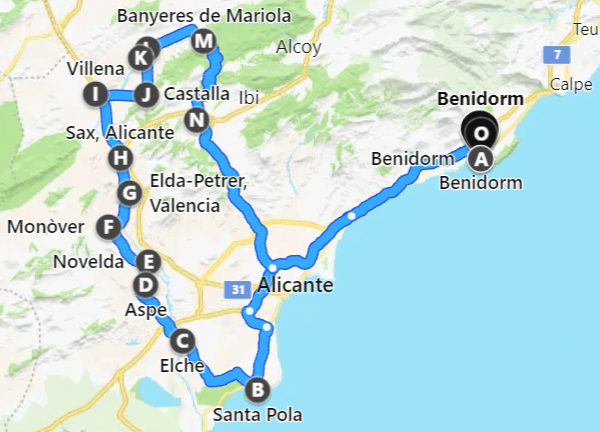
Santa Pola - Castillo-Fortaleza
The castle/fortress can be found n the centre of Santa Pola, on Plaza de la Glorieta. This was built in the 16th century its main purpose was to protect local seamen against pirate attacks. Entrance is via an access gate that leads up to a large patio called Patio de Armas.
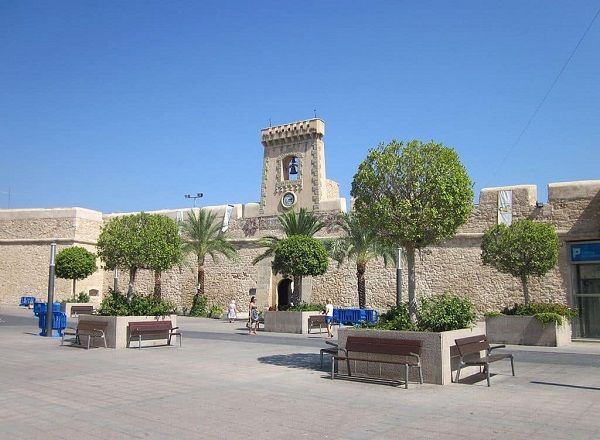
Over the years the castle has had various uses including being a hospital, the court, and Gardia Civil headquarters. It is now a chapel, exhibition hall and home of the maritime museum which is a good place to learn more about the local history.
Opening times for the museum - From Tuesday to Saturday: 10 a.m. to 1 p.m. and 4 p.m. to 7 p.m. Sunday 11 a.m. to 1a.m. Monday closed.
Entry Prices - Individual entry: 3 euros. Child (under 3 years): free. Child (between 4 and 16 years), students, young-card and pensioners: 1,50 euros
Also worth visiting are the Torre Escaletes, Torre Tamarit and Torre Atalayola.
Our opinion of Santa Pola Castle. As stated above this is not really a castle in the traditional sense, it is much more a fortress, but is well worth a visit just for the museum. There is a well placed car park nearby. When in this area the Skywalk is also worth visiting.
Costa Blanca Castles
Elche - El Alcázar, The Altamira Palace
Also known as Palacio de Altamira or Alcazar de la Señoria, this is situated next to the Vinalopó riverbed, to the northwest of ancient walled city, it is now fully restored and is part of the Archaeological and History Museum of Elche and houses sections dedicated to the Andalusian and contemporary eras of Elche.
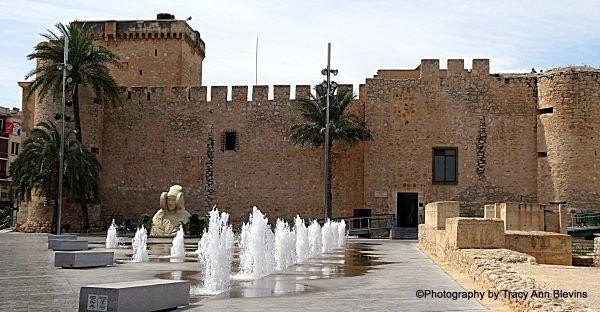
The palace was built at the end of the fifteenth century, but it is thought to be built on an earlier building dating from the 12th or 13th century, which would have been part of the defences of the walled village.
In April 1939, after the end of the Civil War, Franco's troops used the building as a concentration camp for Republican prisoners.
Opening hours: MAHE (Elche Archaeological and History Museum)
Monday to Saturday from 10:00 to 18:00. Sundays and public holidays from 10:00 to 15:00. Guided tours: Saturdays and Sundays: 11:30 and 12:30.
Price: General ticket: €3.
Students and groups (minimum 15 people. Pre-booked): €1.
Carnet Jove, senior citizens and large families (with more than 4 children): €1.50.
Free: Sundays, children under the age of 6, holders of Elche Town Council gold card, teachers and registered group leaders, disabled and reduce mobility.
Other places to visit whilst in Elche: Las Murallas de la ciudad de Elche, Torre de la Calahorra, Torre de Ressemblanc, Torre de Los Vaillo, Torre del Pinet, El Castellar de Elche o Castellar de La Morera.
Our opinion of Elche Castle - As the entry price also includes the museum, which you have to physically go through to get to the castle itself, it was good value for money, BUT we felt that this castle was rather soulless. It has been so heavily renovated, which is fantastic in one way as it makes it accessible to everyone even those with walking difficulties, even the car park seems to be part of the museum, with lifts etc.
Aspe - Castillo del Río/Castillo de Aljau
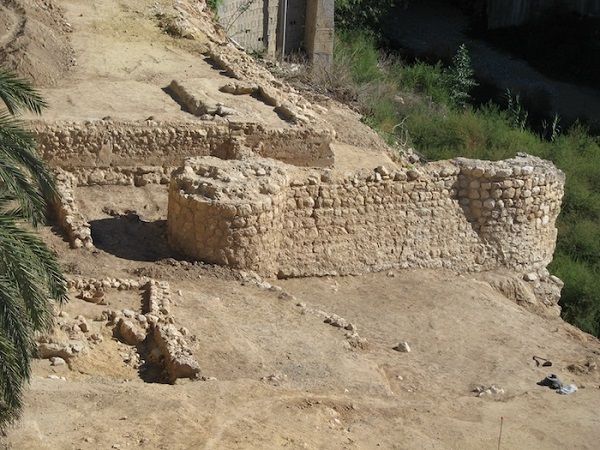
The Castle of Aljau is a medieval fortification from the second half of the fourteenth century and is also known as the Castle of the River or Castle of the Moor and is built over an old settlement dating back to Arab times, this castle is, now in ruins and only the remains of some of its twelve turrets can be seen.
Novelda - Castillo de la Mola
This is a symbol of the city and was declared a Property of Cultural Interest in 1931.
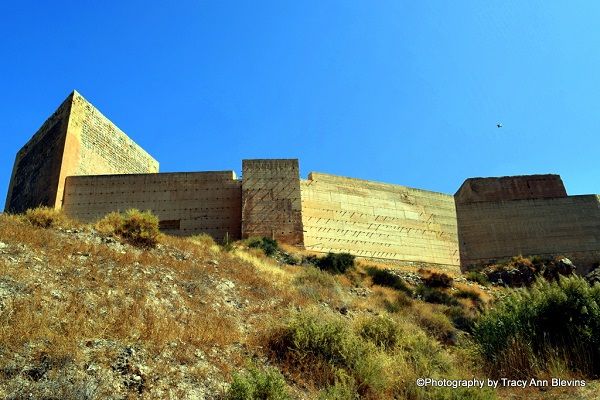
The castle of La Mola stands next to the Sanctuary of Santa María Magdalena and was built at the end of the 12th century and is of Islamic origin, the design. It is a polygonal enclosure with thick walls built with eight quadrangular cubes of which only four now remain. The ruins of the wall are preserved.
Opening hours - Monday closed. Tuesday to Saturday from 10:00 to 14:00 and from 17:00 to 19:00. Sundays from 11:00 to 14:00 and from 17:00 to 19:00.
Our opinion of Castle La Mola, to be honest the Sanctuary next door is the reason most people visit this area, the castle just happens to be next door, but it is well worth a visit, entry is FREE and the views from the top are quite spectacular. There is plenty of parking available but quite a steep climb to both the Sanctuary and castle.
Costa Blanca Castles the Vinalopo Castle Route
Monóvar - Castillo de Monóvar
Monovar castle sits on one of the towns two hills and was built in the late 12th or early 13th century and was in use up until the 17th century. It is currently in ruins although there is a recently restored tower.
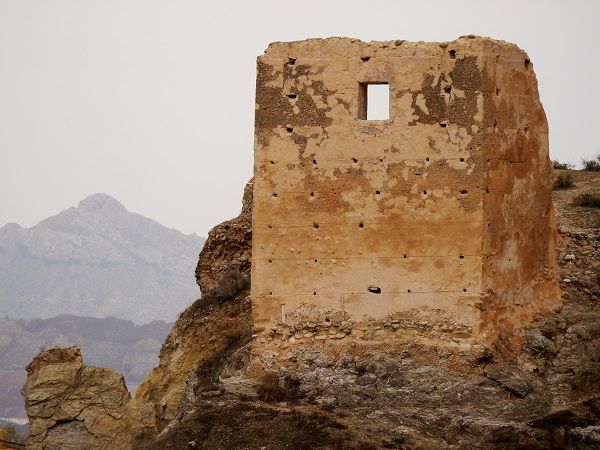
Recent archaeological excavations on the hill where the castle was erected have found bronze Age remains and fragments of almohade pottery from the 12th and 13th centuries, fragments of jugs, plates from the 14th and pieces of jewellery from the 15th or 16th centuries.
Elda - Castillo de Elda
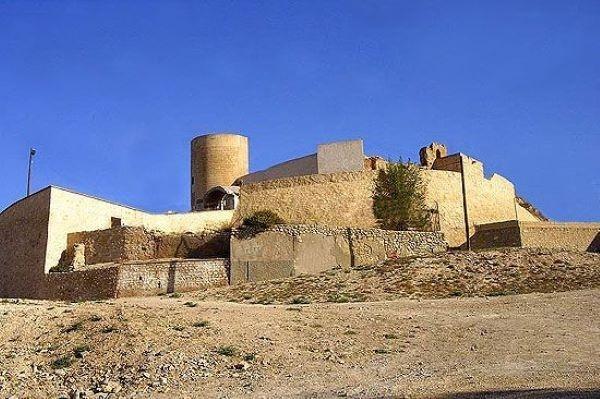
Elda Castle is located on a small hill next to the river and was built between 1172 and 1243. It was used to protect the Arab community and served as a military enclosure; it was in use until the early eighteenth century. It is currently in ruins although some areas have been partially restored and works continue on the restoration process, the castle is closed whilst this work is ongoing.
Petrer - Castillo de Petrer
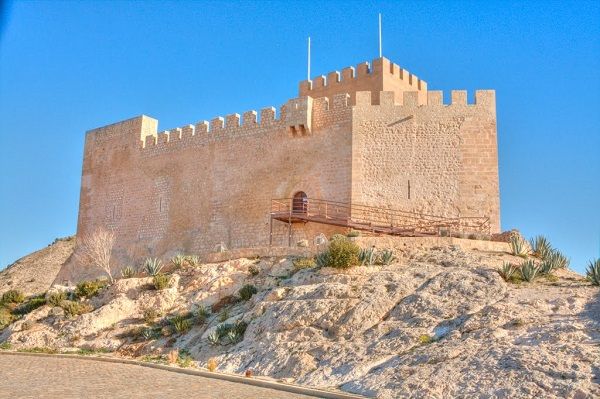
Castillo de Petrer is located at the highest point of the city; it was constructed towards the end of the 12th Century by the Arabs. The heart is a square-plan homage tower, Inside the tower are half-barrel vaults. This castle is in a perfect state of conservation following various restorations that have been carried out over the last 50 years, it is now one of the most impressive castles in the area and has unbeatable views the whole of the Valley of the Vinalopó. Free Guided tours are available.
Costa Blanca Castles the Vinalopo Castle Route
Sax - Castillo de Sax
Castillo de Sax stands 524 meters above sea level on a high elongated rock and dominates the surrounding area, the fortress itself is only accessible from the Northwest side. The castle was built around the 14th Century on top of a Almohad castle from the 12th Century.

This castle is completely restored and is made up of two towers at each end with walls that are 2 meters thick. Sax castle is accessible every day. You go to the police station for the key and leave your passport or identity card as a deposit.
Villena - Castillo de la Altalaya
This castle is the largest on this route and dates between the 11th and 12th Century, the name means vantage point or Castle of the Watch, the castle sits on top of Mount San Cristobal The castle has a total of 12 turrets along the outer fortress walls.
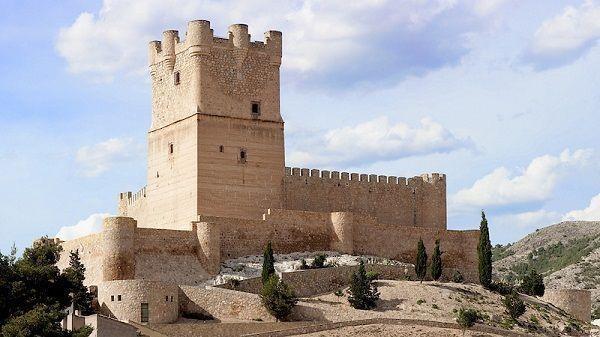
On the inside is the quadrangular main tower, which is 4 storeys high, one of the best things about the tower are the vaults of the first two floors where you will see graffiti on the walls made by prisoners of war.
Due to its great historical value and unique qualities, the castle was declared a "Historical Artistic Monument" in 1931. Restoration and archaeological excavations began in 1958 and continued on and off until 1990.
Entrance fee - Normal price: 3.00€, reduced price: 1,50€ (groups, students, 65+) children under 7: FREE
Opening Hours - Tuesday to Sunday 10:00 to 14:00 guided tours upon reservation at: 10:30, 11:30 and 12:30.
Tuesday to Saturday. Open from 16:00 p.m. to 18:00 p.m. Guided tour upon reservation at 16:30.
Closed: Monday all day and Sunday afternoons and holidays.
Our opinion of Castillo de la Altalaya - This was one of our favourites, easy to find, easy to park, easy to walk round. Although quite renovated in some areas, it still has a lot of charm and the views from various turrets and tower are spectacular. There are plenty of information boards to keep you occupied. Tickets are purchased at the tourist information office just by the car park and its well worth the 3€.
Biar - Castillo de Biar
This wonderful 12th century Muslim castle sits on top of the hill at an altitude of 750 m overlooking the town and was declared a National Monument in 1931. The views from the top are spectacular. It was particularly important during the time of Jaime I, following the Treaty of Almizra (1244) when it became one of the border castles.

Opening times - from 10:15 - 13:45, entry 1€
Our opinion of Biar Castle - This is one of the most picturesque castles from the outside and the views across the town of Biar and the surrounding countryside are well worth the climb, but sadly it was one of the most disappointing internally, make sure you wear suitable shoes as its very rocky and uneven in most places.
The ticket office is situated just inside The great Master or Homage tower, and for 1€ each its worth a visit.
Car parking is just at the bottom of the castle and easy to find if you follow the street signs, the trip back down is not for the faint hearted as its a one way system through very, very narrow streets, with poor signage and a test for any driver.....
Campo de Mirra - Castillo de Almizra
This Castle is of great historical importance as it was here the interview of the King of Aragon Jaime I and infante Alfonso de Castilla was held on March 26, 1244 which gave rise to the treaty of Almizra which ended the Castilian-Aragonese border contest.
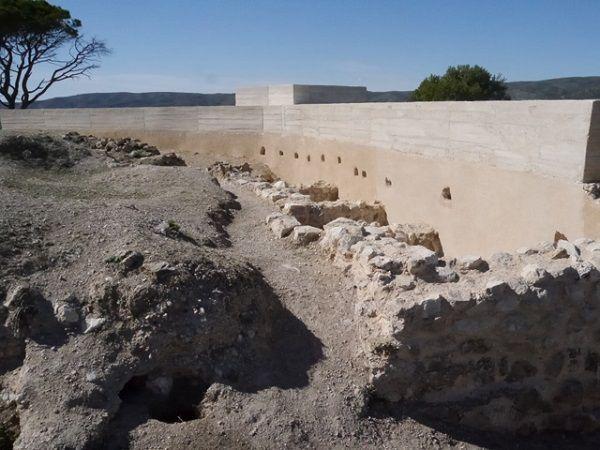
The castle is situated on the hill of San Bartolome, just a few meters from the town centre of Campo de Mirra, it is almost completely in ruins, but Archaeological works have exposed a considerable part of the castle.
Beneixama - Torre Alatalaya de Beneixama
Beneixama Castle is located within the town centre, sadly only a few remains of the primitive walls remain. King James, I settled in the castle for a short time, on his way to the castle of Almizra, for the signing of his famous treaty mentioned above. The most significant ruin is known as the Tower of Beneixama, which can be found close to the Plaza del Ayuntamiento, this has recently been renovated.
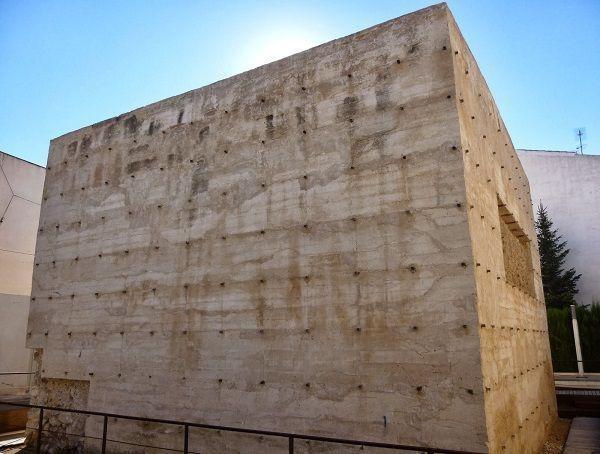
Banyeres de Mariola - Castillo de Banyeres de Mariola
Banyeres Castle is located at an altitude of 830 metres above sea level and it dates back to the 12th/13th centuries. The town itself sits at the highest altitude of any in the province of Alicante.
The castle witnessed several wars, the most prominent was the War of Succession which took place in 1705, when the castle was used as shelter by the local population that were fleeing from sieges and fires in the nearby villages.
Reconstruction of the castle took place in 1803, according to a date on a seating stone found at the access of the large, vaulted room.
The castle you see today is due to restorations that were carried out in the seventies and eighties, Inside the castle we will find the Tower of Homage, Courtyard of Arms, Cistern and the Museo Festero (Festive Museum), although the castle has been completely rebuilt remains of its primitive construction can still be found.
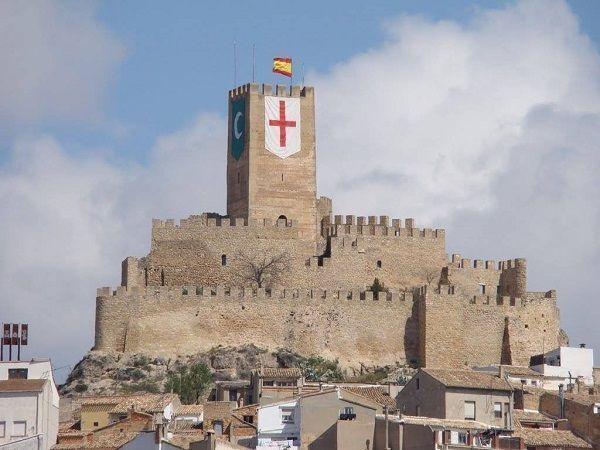
Visiting hours are generally, Saturday, Sunday and public holidays from 11.30 to 14.00 or from 16.30 to 17.00 hours, these hours may vary, entrance fee is 2.50€ for adults or 1.25€ for children and concessions.
Costa Blanca Castles the Vinalopo Castle Route
Castalla - Castillo de Castalla
This castle is of Islamic origin built in the 11th century on Neolithic and Iberian-Roman remains, it is located high on the hill 680 metres above sea level overlooking the town of Castalla with amazing views over the surrounding countryside.
The castle is declared an Asset of Cultural Interest in the Monument category and consists of three areas that enable visitors to see how the fortress developed from its Islamic origins in the 11th century, and how it was extensively reformed in the 14th and 15th centuries by the Christians.
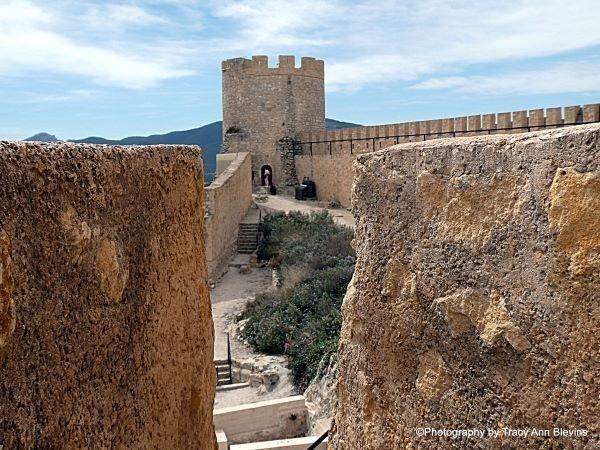
The hilltop site also contains traces of the earliest settlements dating back to 2000 BC. The three areas are: the Palau (palace), accessed by means of an intricate defensive system; the Pati d’Armes (inner courtyard) with its inner curtain walls, rooms and very well-preserved cistern; plus, the Torre Grossa (keep)
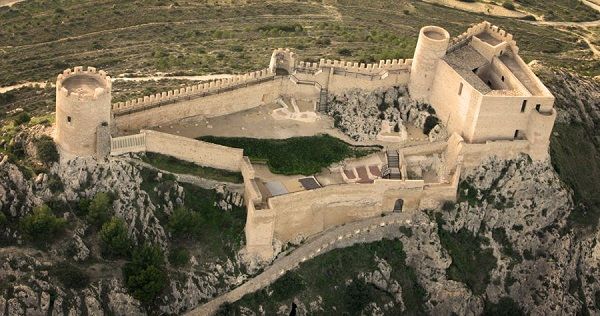
Opening Hours
Jan - May, Wednesdays to Sundays 10:00 - 14:00, June, July and August - Wednesdays to Sundays 10:00 - 14:00 and 19:00 - 21:00. September, October, November and December 10:00 - 14:00 Guided tours are available telephone 966 561 018 for more information and times.
Entrance fees are 3€ for adults, 2€ for children and seniors, Free for children up to the age of 7.
Our opinion of Castalla Castle. This was one of our favourites, good mix of old and tasteful renovations, which did not destroy the ambience of the castle. There are many rooms in the palace side to explore if you are brave enough to venture up the very narrow, twisted staircases. The information provided is very good and in English.
The only downside to this castle is parking, unless you get lucky and manage to park just near the tourist information office where there is space for about 3 cars, it can be a very long hike from the town itself, even parking as close as possible it is quite a steep walk to the castle itself.
*All prices and opening times given are a guide and can be subject to changes*.
LIKE OR FOLLOW BENIDORM SERIOUSLY ON FACEBOOK
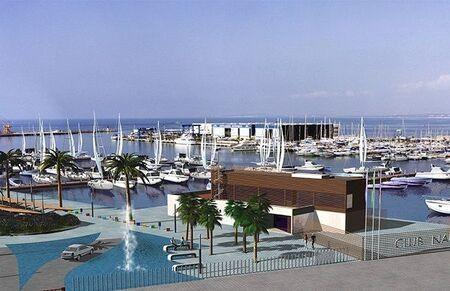
Santa Pola Costa Blanca South
Santa Pola is situated on the Costa Blanca South it is a popular holiday destination for many, especially the Spanish themselves, its close proximity to the Airport helps and it is only a few miles from Alicante city.
Unlike many of the other nearby coastal towns, Santa Pola remains busy all year round as it is a working town with a busy port, every evening you can see the fishing boats return with their daily catch. The port also has a lovely marina.
If you like outdoor activities, Santa Pola offers: hiking trails, promenades for walking or skating, cycle friendly routes and of course its famous for its water sports especially wind and kitesurfing, in fact Santa Pola was chosen to host the world windsurfing championship in 2009.
Santa Pola is also perfect for paragliders and is one of the top paragliding spots in Europe and is particularly good with an easterly wind, there are take-off areas which are easily accessible were paragliders can enjoy hours of flying time.
More places to visit on the Costa Blanca South
Places to visit on the Costa Blanca North
Santa Pola Beaches
The town has 6 beaches that cover 4km. Playa del Varadero, Calas de Santiago Bernabeu, Playa de Levante, the marina, Gran Playa (or big beach), Playa Lisa, Playa del Tamarit.
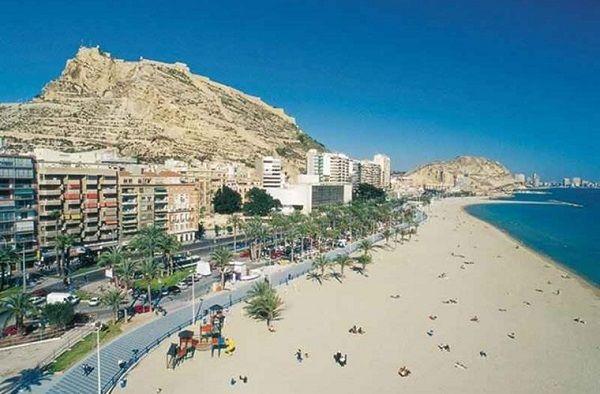
All 6 beaches are sandy and have Red Cross and lifeguard towers. The Gran Playa and Playa de Levante also have access for wheelchairs.
The best beaches for windsurfing are Gran Playa, Playa Lisa, Playa Tamarit and Playa de la Gola you will also find clubs around these beaches for equipment rental and classes etc
Market days - Saturdays and Mondays
Santa Pola Costa Blanca
Santa Pola Miramar Marina
This wonderful marina has 234 berths and 195 car park places. Enjoy a stroll along the Marina where you will find some very stylish restaurants and bars. the Marina is a lovely spot for a break from the beach and a spot of lunch or a evening meal watching the world go by.
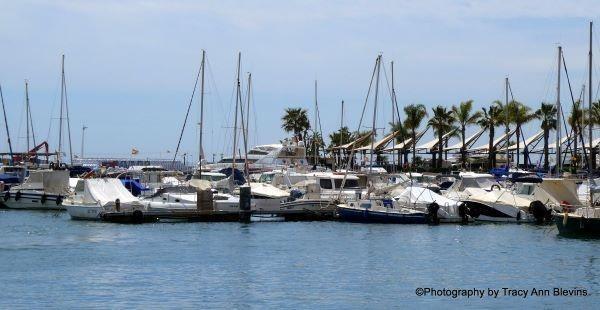
You can also catch the ferry from here over to Tabarca Island which is only 9km away. Do not forget your snorkelling gear as the pebbled beaches and picturesque little coves make this an ideal snorkelling location. Current ticket prices for the round trip are 15€ for adults and 10€ for Children. Journey time is between 15 and 30 mins depending on the type of boat. These boat trips are seasonal and obviously dependent upon sea conditions.
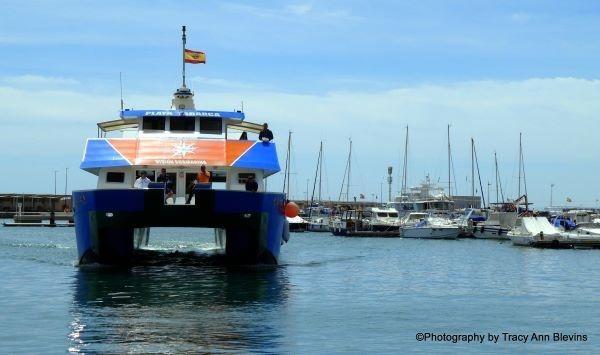
Do not forget to visit the fishing port where you can observe the daily fish auction at the Fish Market from Monday to Friday from around 4:30 pm.
The Municipal Aquarium, Acuario Municipal de Santa Pola NOW OPEN
This is the oldest and largest salt water Aquarium in the Valencian Community and has 9 large aquariums and is dedicated to showing some of the fauna and flora of the Mediterranean Sea and reveals the underwater world in the bay of Santa Pola and the island of Tabarca. Most of the species collected have been donated by the sailors of Santa Pola.
To celebrate its reopening, the normal admission charge of 3€ for an adult, and 1.50€ per child has been waived...(and will be for the rest of this year!)
The aquarium is situated in the Plaza Francisco Fernández Ordóñez -
Winter Hours (September 9 to June 24)
Tuesday to Saturday from 10:00 to 13:00 and 17:00 to 19:00 h.
Sunday 10:00 to 13:00 h.
Monday and public holidays closed.
Summer Hours (July 1st to August 31st)
Monday to Sunday from 11:00 to 13:00 and 18:00 to 22:00 h.
Special opening hours (September 1st to 8th)
From 10:00 to 13:00 h.
8 September closed
Entrance Fees
Adults and people over 16: 2.50 euros From 4 to 16: 1.25 euros Children under 4 free Retired people: 1.25 euros Groups, students: 0.65 euros Telephone 965 416 916 for more information.
Santa Pola Castle and Sea Museum

The castle/fortress can be found n the centre of Santa Pola, on Plaza de la Glorieta. This was built in the 16th century its main purpose was to protect local seamen against pirate attacks. Entrance is via an access gate that leads up to a large patio called Patio de Armas.
Over the years the castle has had various uses including being a hospital, the court, and Gardia Civil headquarters. It is now a chapel, exhibition hall and home of the maritime museum which is a good place to learn more about the local history.
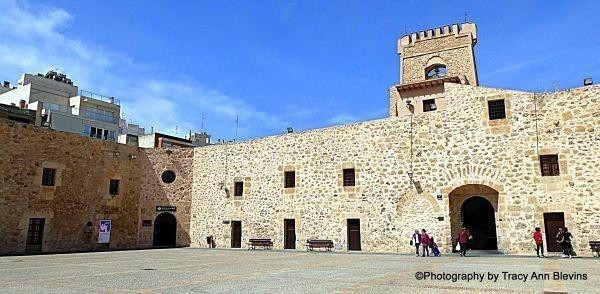
Opening times for the museum - From Tuesday to Saturday: 10 a.m. to 1 p.m. and 4 p.m. to 7 p.m. Sunday 11 a.m. to 1a.m. Monday closed.
Santa Pola Costa Blanca
Esteban Gonzalez Boat Museum
The Esteban Gonzalez is a boat museum that recreates the authentic and genuine life on board of the fishermen of Santa Pola. This can be found in Constitution Square, around the Town Hall.
Enjoy a guided tour, seeing the most important places of the boat and learn about the most relevant type of fishing in the municipality. You can also see what life was like onboard
Winter timetable from the 9th September:
Friday guided tour at 12 am. and 5:30 pm.
Saturday guided tour at 11 am. 12 am. and 5:30 pm.
December and January closed
Timetable from 1st May:
Friday guided tour at 12 am. and 6 pm.
Saturday guided tour at 11 am. 12 am. and 6 pm.
Sunday guided tour at 11 am. and 12 am.
Summer timetable from 1 July - 31 August:
Tuesday to Sunday from 6 pm. to 9 pm. (guided tour every hour, last visit 8 h.)
Closed during Festivities (from 31st August to 8th September)
Entrance Price
Individual entry: 3 euros. Child (under 3 years): free. Child (between 4 and 16 years), students, young-card and pensioners: 1,50 euros
You can also purchase combined tickets for the museum, aquarium and boat museum.
Plaza del Calvario
This is the fishermans's quarter and located in one of the highest areas of Santa Pola. whilst in this area visit the Chapel ( Ermita ) built at the beginning of the 20th century designed on Moorish architecture
Santa Pola Costa Blanca South
Santa Pola Lighthouse the Faro de Santa Pola and the Skywalk
The lighthouse was built in 1858 on the sight of an old watchtower "Atalayola" and is situated to the northeast of Santa Pola.
The lighthouse’s lamp is 15 meters above the base of the building, 138 meters above sea level and about 360 meters from the shore.
The light can reaches 16 miles for fixed light and 27 for flashes in good weather.
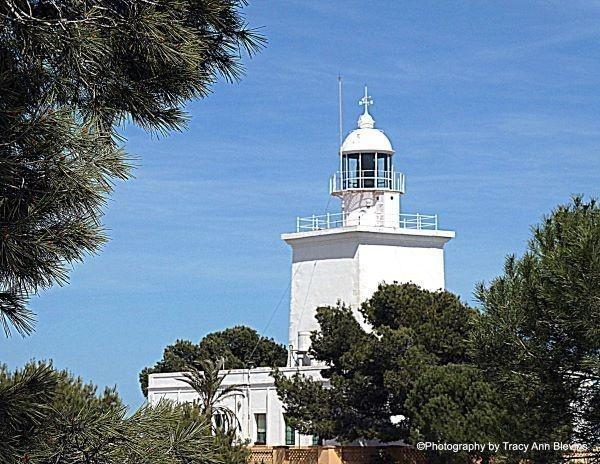
There are two options to get to the lighthouse and the skywalk, neither of which are well signposted.
A) Put this address into your satnav, 63 Avenida Escandinavia, 03130, Gran Alacant, this will take you to a small parking area and from there it is about a 15 minute walk through pine forests to the lighthouse, the Skywalk is just down a track to the right.
B ) There is a road to both the lighthouse and the skywalk, located just off the N332 between Gran Alacant and Santa Pola, it is easy to miss as there is only a small signpost to the Faro de Santa Pola and this can only be seen from if coming from the Santa Pola direction. The road is quite rough in places and is 4km long, you will find parking and a picnic area to the right and also a few parking spaces right at the very end, from here it is then just a short walk to the lighthouse and skywalk. (wear suitable shoes)

Santa Pola Skywalk
In 2015, Santa Pola Council invested 300,000 Euros in building a 100m metal skywalk (or viewing point) this is suspended on the cliff, you will feel like floating in the air, this is not for anyone who suffers with a fear of heights as it’s 450 feet straight down.
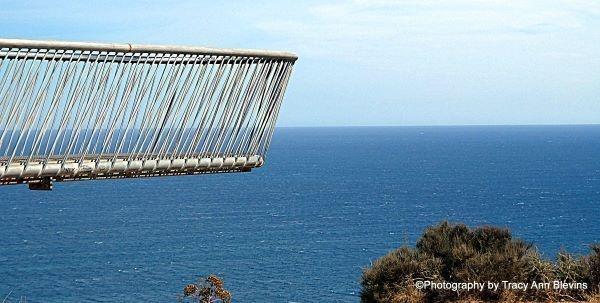
This is a great place for photographers, with panoramic views of the bay and Tabarca, on a clear day you can even see Benidorm.
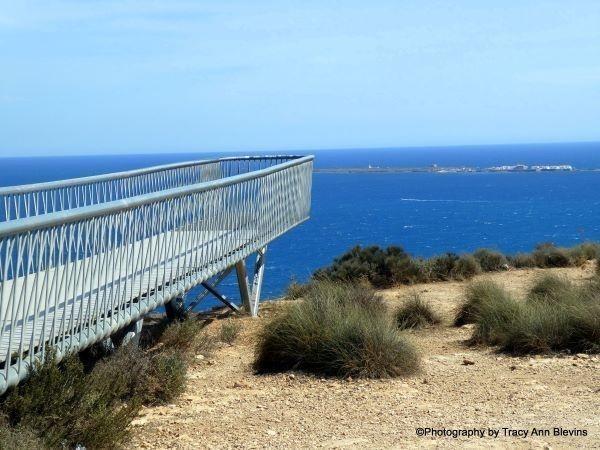

Please note there are no cafes, restaurants or services at either the lighthouse or Skywalk.
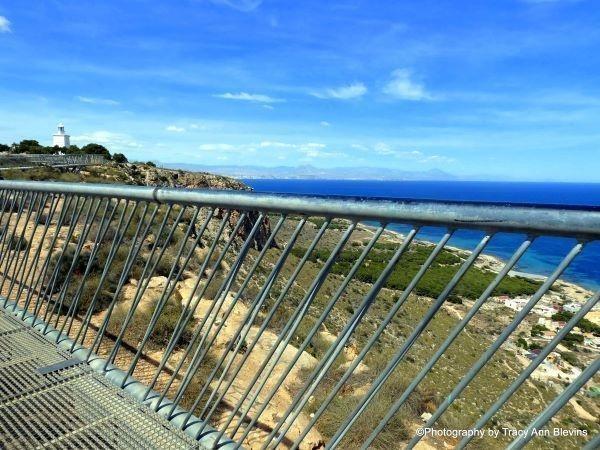
Pola Park - Perfect for the family
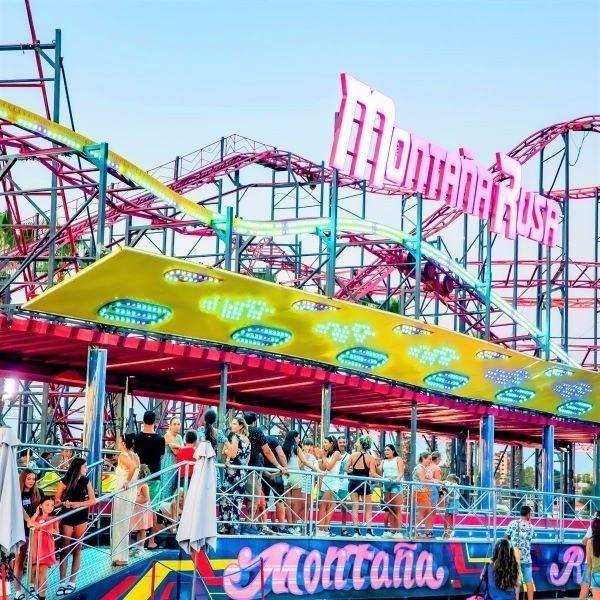
Pola Park is a theme park which opened in 1996, it covers and area of 24000 m2 with plenty of rides and entertainment, suitable for children of all ages, Pola Park offers an exciting day out for everyone to enjoy. Some of your classic fairground attractions at this popular theme park include a thrilling roller coaster, the giant pendulum and the adrenaline rush freefall. Go-karts, a boating lake, and an aerial train, slides, bouncy castles, flying chairs, rollercoaster, pirate boat, karts and mini-golf. The park also offers a good choice of food services such as a sandwich bar, burger restaurant, and pizzeria.
Pola Park is located just a short distance from the centre of Santa Pola just of the N332, opposite the beautiful pink salt lakes in Santa Pola, Alicante where you can frequently spot flamingos, and experience the most stunning sunsets at the end of the day.
Salt Flats of Santa Pola, Salinas de Santa Pola
Situated to the west of Santa Pola, are the Salinas de Santa Pola (salt flats ) these are a designated nature reserve and an area of Special Protection for the conservation of wild birds. The salt flats cover 2,496 hectares, the exploitation of the salt started at the end of the 14th century. Today the salt is extracted from here and commercialised.
Here you will also find a strategically placed "Tamairt" watchtower, which has been renovated. The towers were used to communicate warnings of impending danger, smoke signals were used during the day and lights at night.
There are several walking routes through the park, where you can explore the varied flora and fauna as well as the elegant pink flamingo's which are famous in this area.
DISCOVER THE EL PINET WALKING ROUTE IN SANTA POLA!..This picturesque and peaceful walking route, commences at the old salt ponds of Santa Pola that are no longer used for production, but still maintain the water circuit and the wealth of wildlife that goes with it. The nature trail runs from the carpark into the sand dunes with the shore line as a backdrop, until it reaches the beach. Here you can take in beautiful views of the Cape of Santa Pola, the Island of Tabarca, the mouth of the River Segura and the entire coastline to Cape Cervera in Torrevieja.
The route includes two micro-flora reserves and three observation points for bird watching. It is a fairly simple, circular route with a duration of about 30 minutes. The best place to start is at Calle Noruega, 29, 03194 Elche, where you will find a car park and picnic area
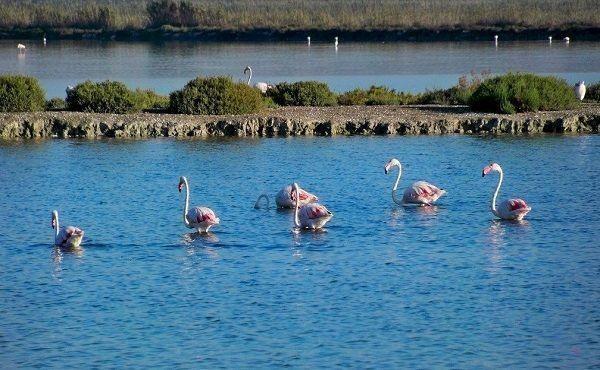
At the reserve, you will find the Museo de la Sal (the Salt Museum) where you can learn more about the process of salt extraction and its history. The Museum also has a lookout for bird watching and offers guided visits. Opening times - Monday, Wednesday and Friday from 9’00 to 15’00h. Tuesday and Thursday from 9’00 to 15’00h and from 16’00 to 18’00h. Saturdays, Sundays and holidays from 9’00 to 15’00h.
*Benidorm Seriously are not responsible for any changes in schedules or prices quoted above*
Getting to Santa Pola from Benidorm
The nearest trains are from Alicante and Elche. There are buses from Alicante city and Alicante airport to Santa Pola which run about every 30 minutes and take 35 to 45 minutes.
Santa Pola is a 45 minute drive (70km) from Benidorm via the A-70 and AP-7 or Via the N332
For the return journey, and a great views follow the coast road through Santa Pola del Este. That takes you back along the base of the cliffs back towards Urbanova and Alicante.


